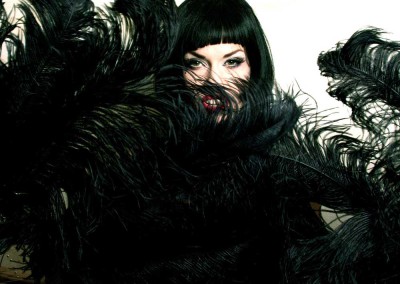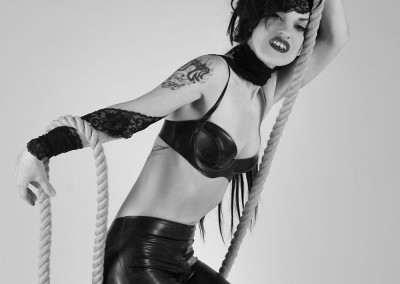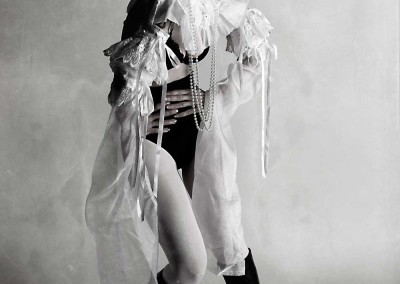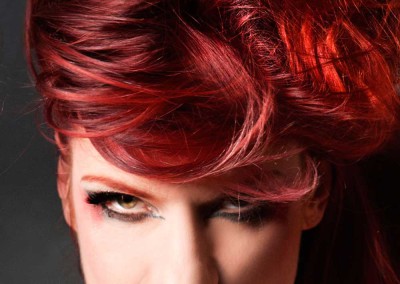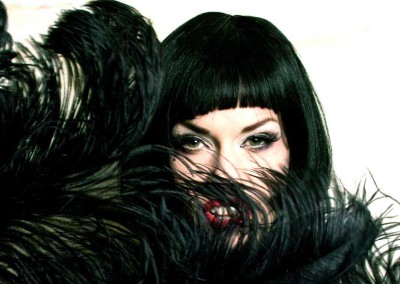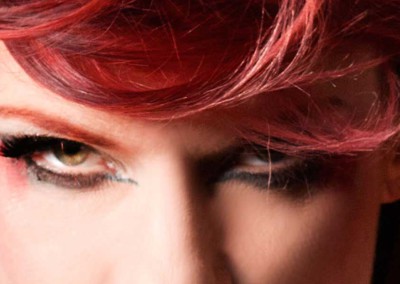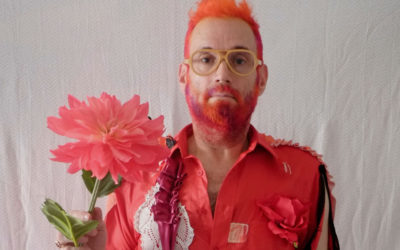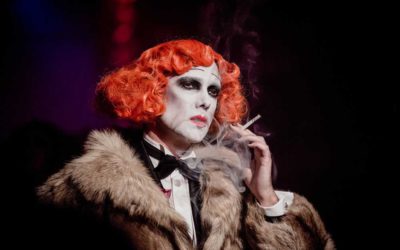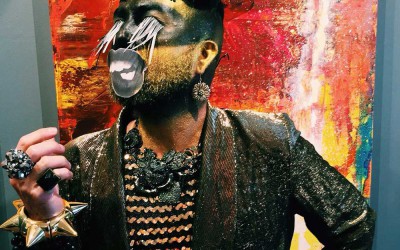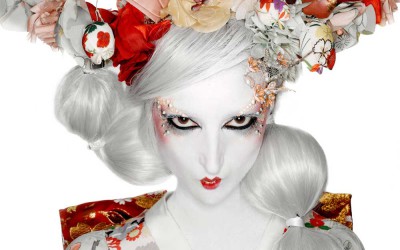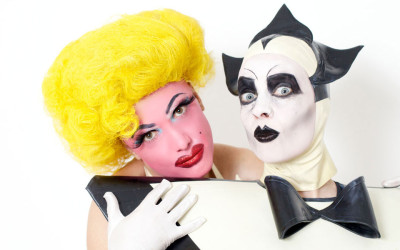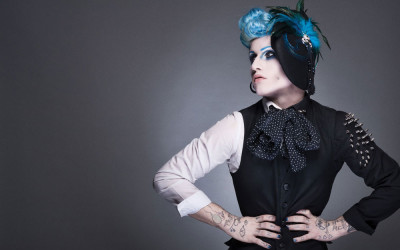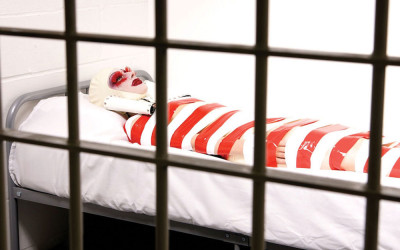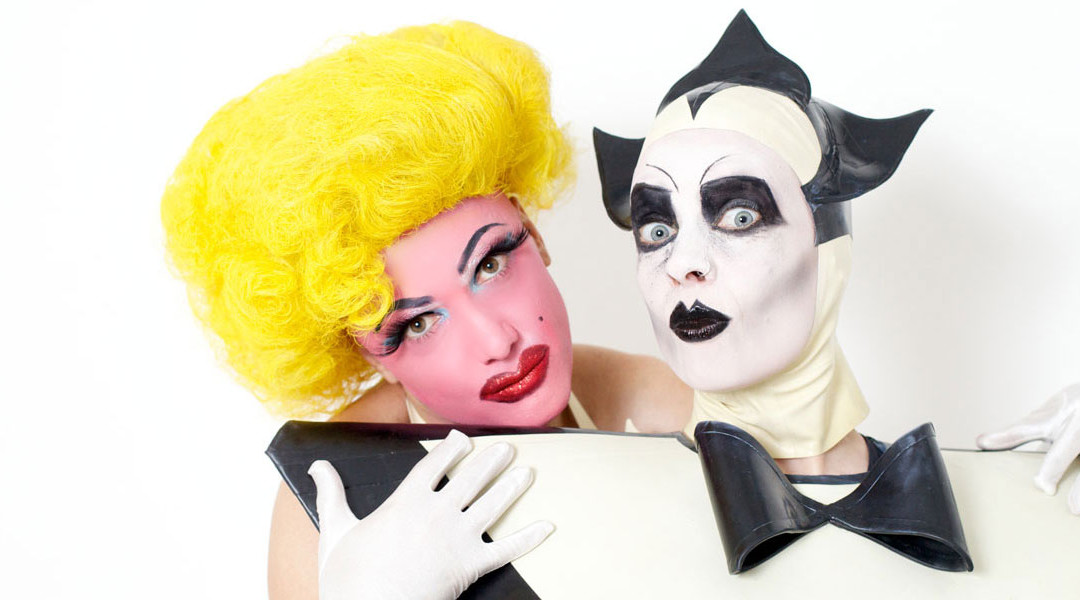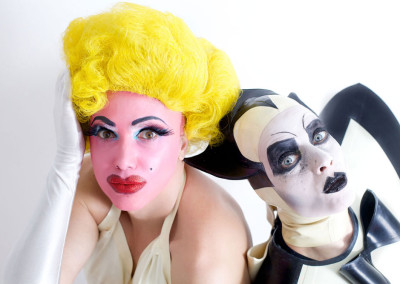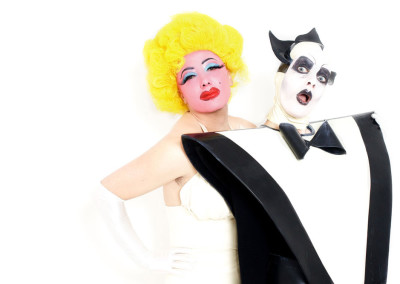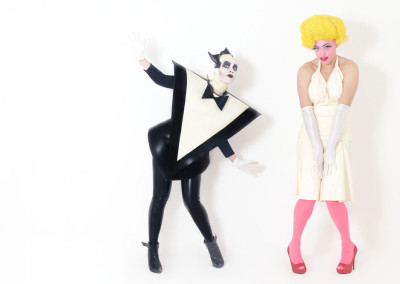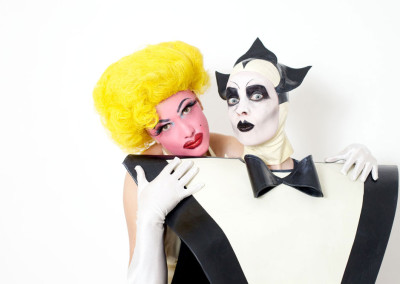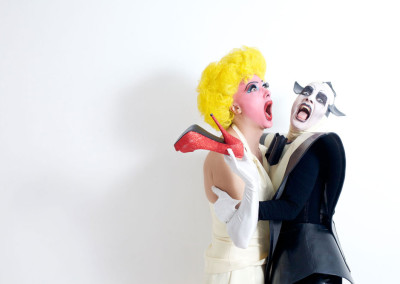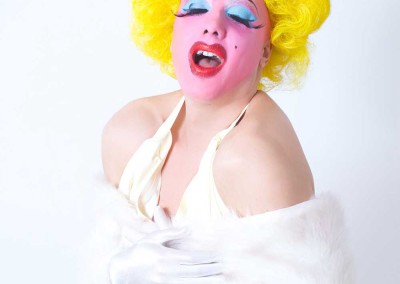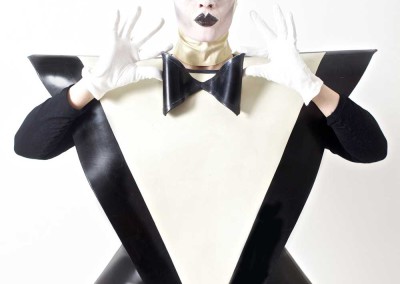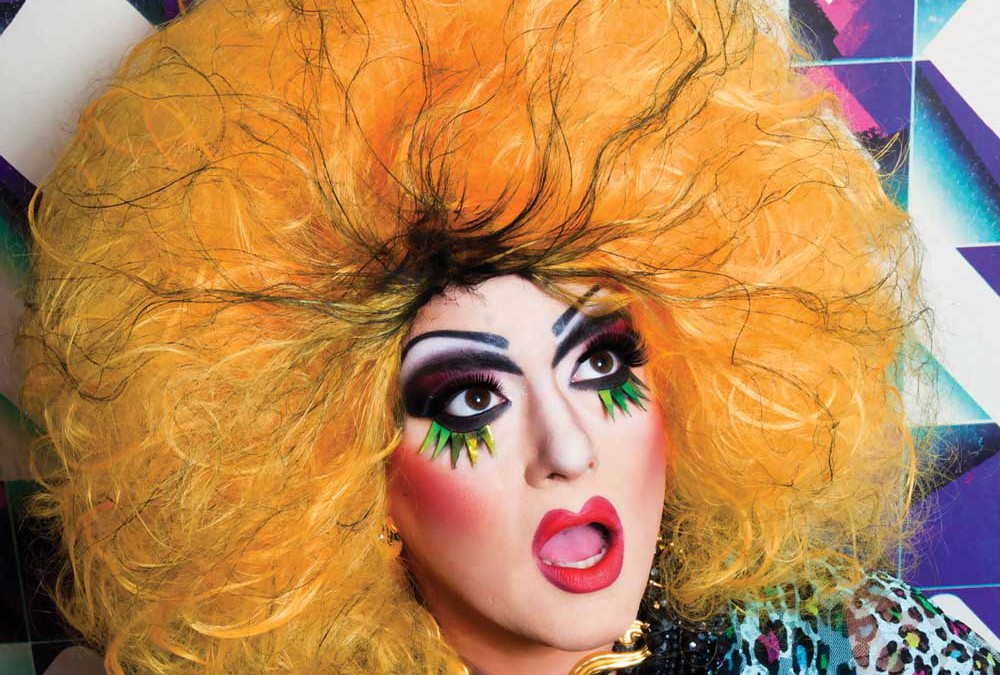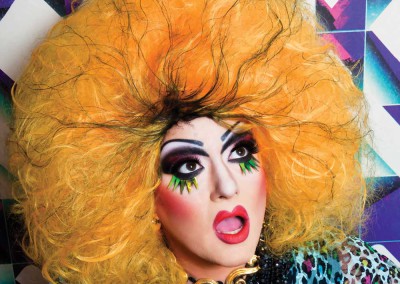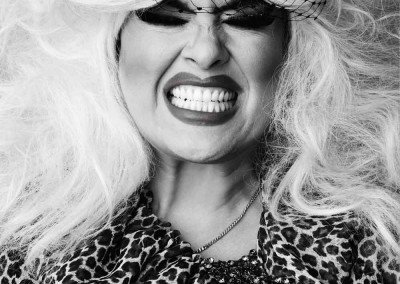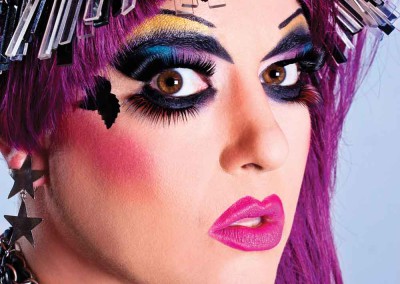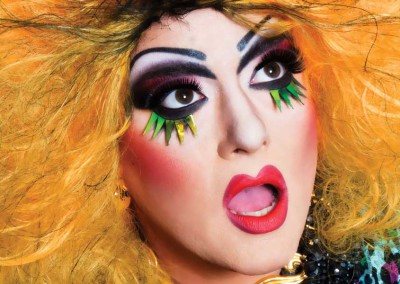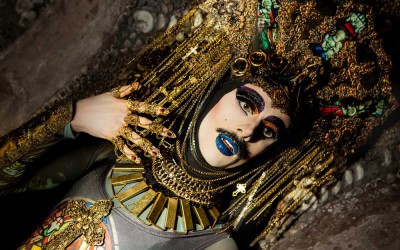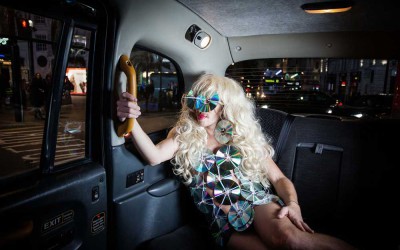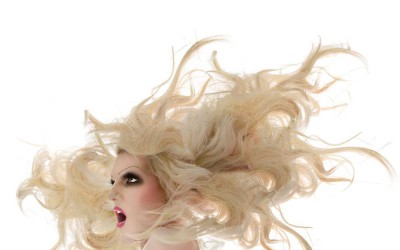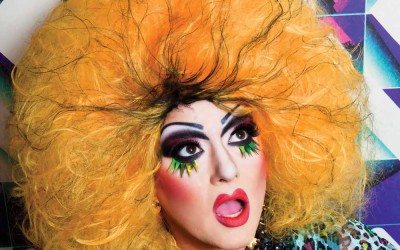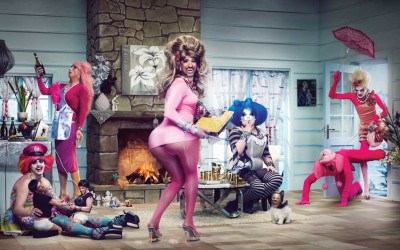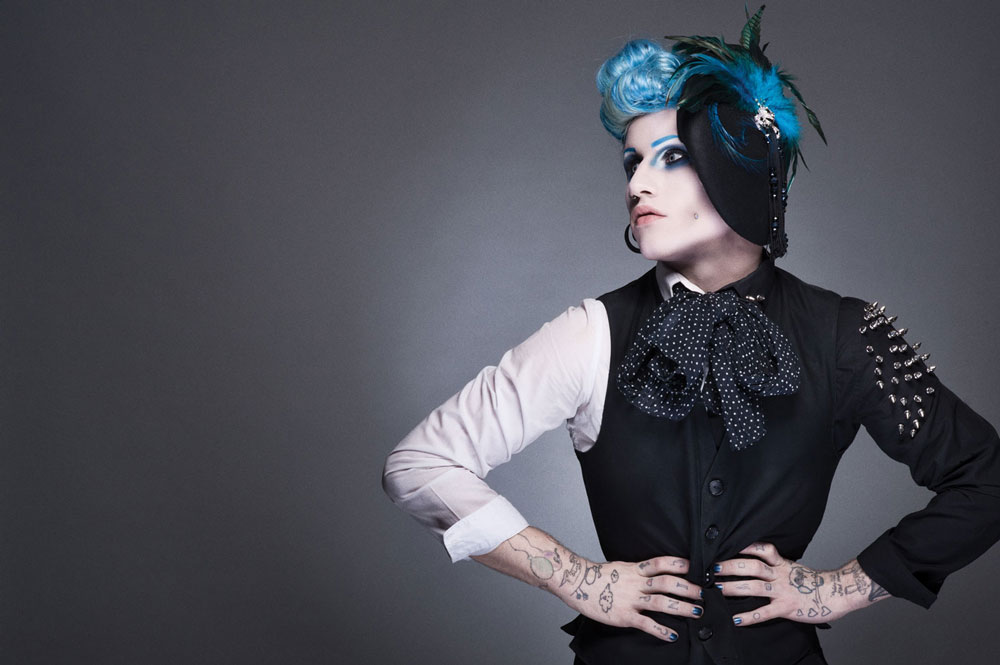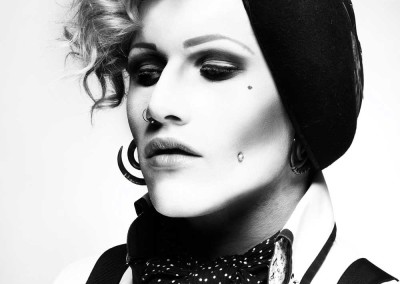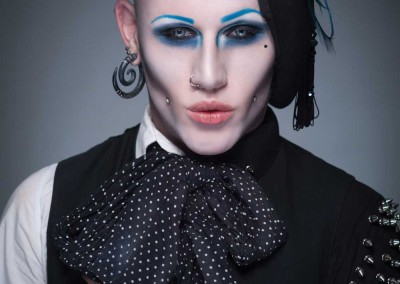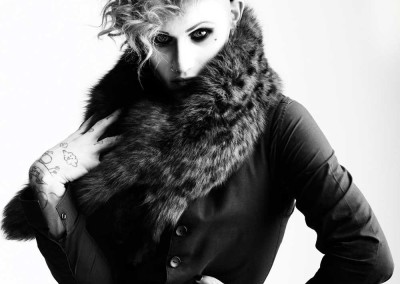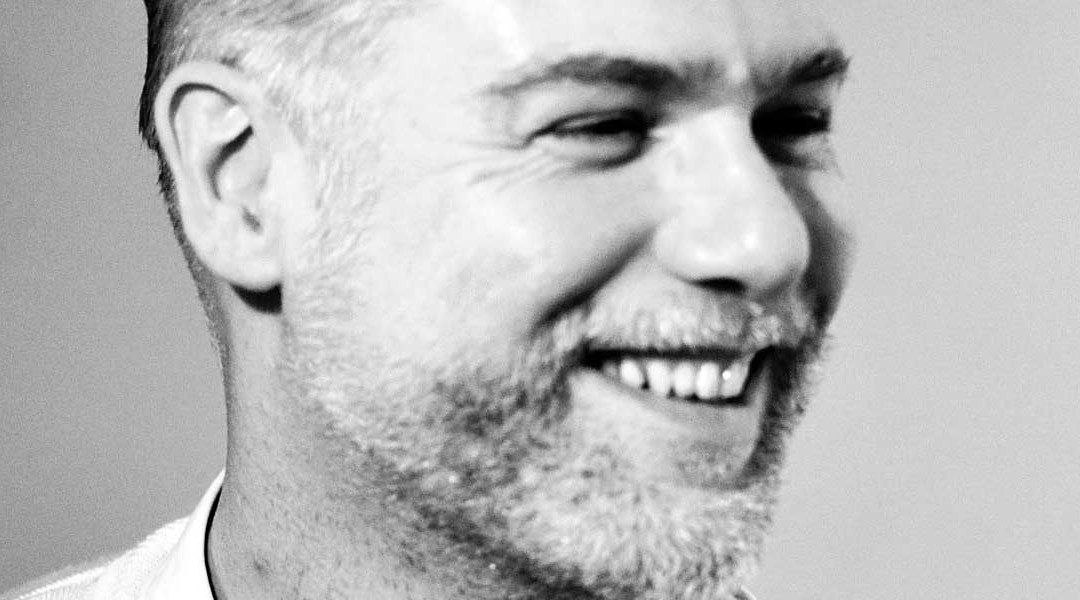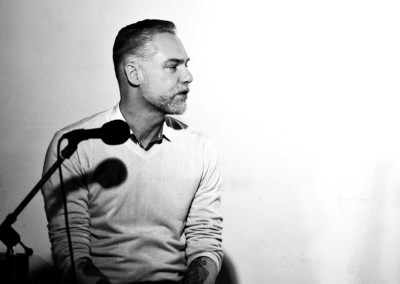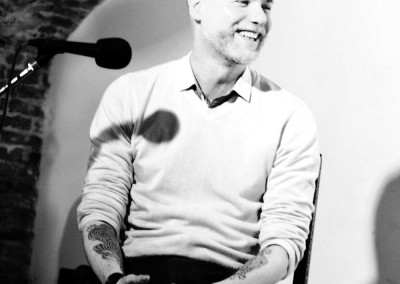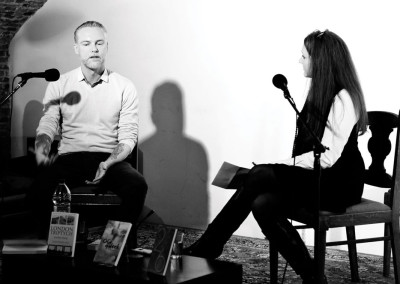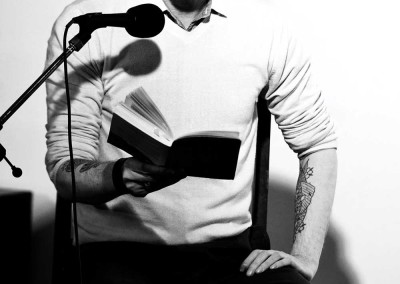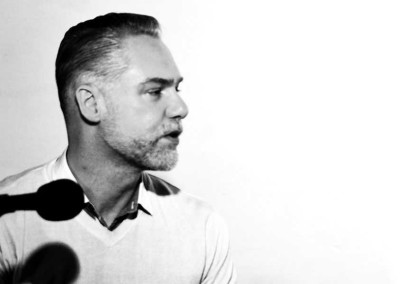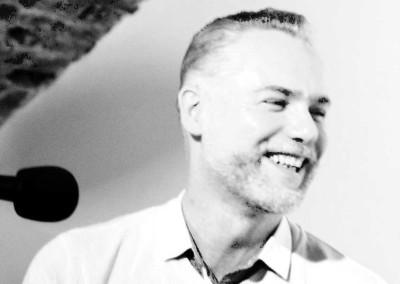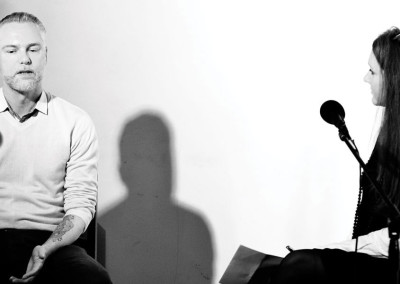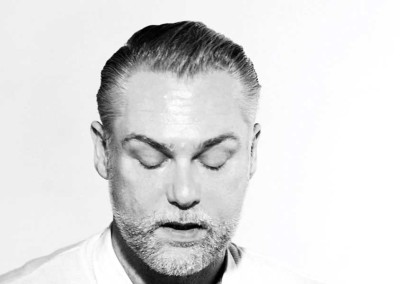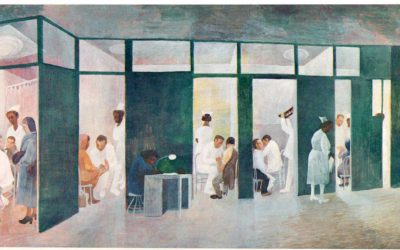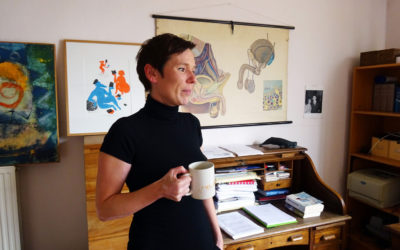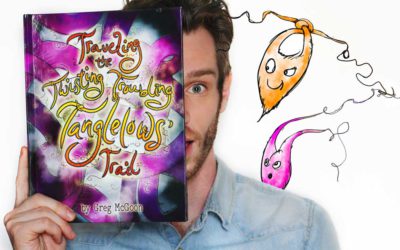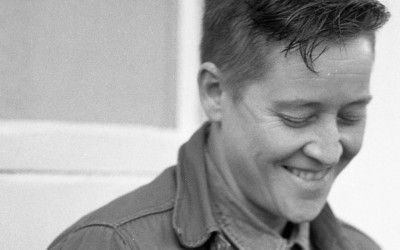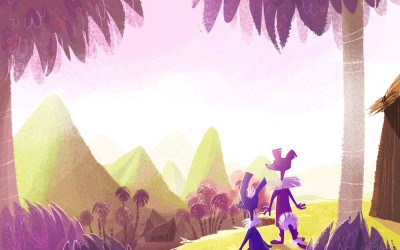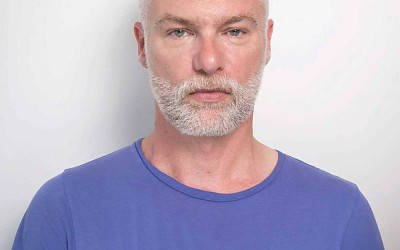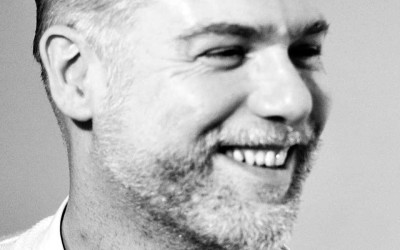We caught up with poet and performance artist Jorge Clar in his home in New York, and talked about words, sounds, and image. An ideal for living. Initially, you came to New York because you wanted to be close to the disco scene. That was…..
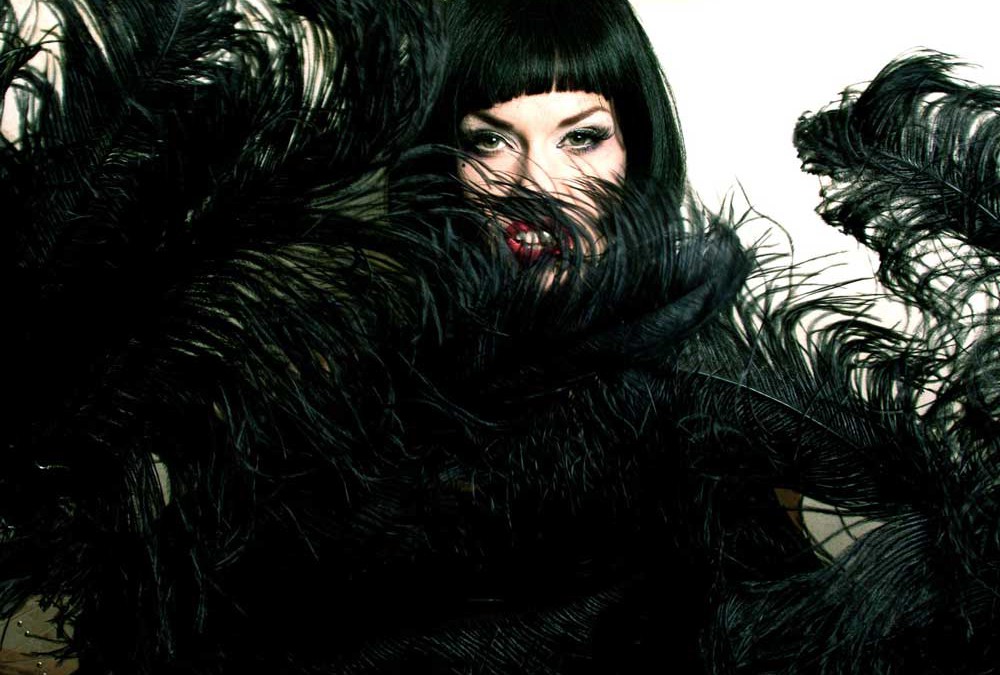
The Vivid Angel
The Vivid Angel
Text JF. Pierets
She’s the queen of alternative performance, won the Twisted Cabaret Crown World Burlesque Games in 2014 and is this edition’s cover model. But most important, sometimes you just meet one of those people who make you think YAY!
How does one become a performer?
When I was 20 I moved to Amsterdam and started my performance career. At a certain moment I’d done so many things, as a dancer and artist I had been on television for so many times that I wanted something different. I was working with Torture Garden and they asked me to come to London, because of all the work I would be able to do. So I went. I’m living here for 16 years already despite my intention to stay only for 2. Back then there used to be not as many performers as there are today. I’m talking about the year 2000 now. I guess we had about 10 or 15 really great performers. So I was always working, always abroad. Nowadays it looks as if there are way more people wanting to be an artist then 5 years ago. And as it usually goes, the party promoters rather fancy a lot of girls for less money than one or two very professional ones with a normal salary. But I’m not complaining. The year just started and I already have a good list of new assignments and bookings.
There’s a lot of burlesque these days, which is completely different than performance art.
There is a lot of burlesque and a lot is the same all over again. I guess it gets the audience and promoter confused and they don’t quite recognize the stylings anymore which goes from performance art to cabaret to burlesque. For me those are all different kinds of shows. I do wish that those younger performers would do a little research. Looking what other people do, or have done, and trying to be a bit more original. Really find your own stories and styling for you shows, it gives for a longer career.
Can you specify what it is that you do?
I call myself a ‘Jack of all trades’. I basically started out as a dancer in the beginning of the nineties, being a full time gogo dancer on Dutch television. When the rave scene commenced I danced at biggest house parties and finally ended up working in a fetish store called DeMask. 3 month later I found myself on a stage with my own show. A show performed in the fetish scene in which you can just ad that twitch of extra darkness to the act. Compared to a mainstream production, that is. In my first show someone laid dead on a bed, a second person would cut open the body and I would jump out as some kind of revenge spirit. For me it was a very important point in my career because I got to work with the artist called Crazy White Sean. We were both beginners when it came to performance art but we really felt each other when it came to designing new shows. 10 years later they called us ‘the most famous couple in the fetish scene’, he emerged into freak shows and I became The Vivid Angel. I’ve been performing at the largest festivals, in the biggest clubs. I worked with Alice Cooper, Dita Von Teese, Roger Taylor, you name it. I did and still do very exciting things.
Do tell!
I have a show called Art Noir where I’m creating a painting, live on stage, by using syringes and injecting coloring pigment through my skin. This particular show has been reviewed as ‘suffering for your art’ and you can take that quite literally. I’m going through a pain phase to manufacture that painting. Most of the time those kind of shows are my favorite ones because they are not about entertainment. I generate this surreal world where I try to bring the audience in an atmosphere that’s out of their comfort zone. But no worries. I also have an entertaining side to my personality and I also love doing shows where I can make people laugh, where all is beautiful.
That’s very bilateral.
That’s why I chose to use The Vivid Angel as my name. The vivid is my dark, weird, crazy side and the angel is the sweet, fun and sexy appearance. I always felt those two features both in my being, as in my performance career.
Both mainstream and non-mainstream?
There are not many non-mainstream performance artists. I have the feeling not many people dare to be confronting or extreme nowadays. I have this show about school bullying which you can, by all means, call autobiographical because those were terrible years. Doing that show really get’s to people. Some say after the show that they didn’t like it, while months later they confess that after doing some thinking, it really got to them. And I think that’s the difference between performance art and entertainment. What I do is not only beautiful and easy to digest. But I do hope the tendency will once again reach back to performance art because it’s an honest and very emotional art form. And if well represented, it’s one of the most beautiful things you can witness on a stage. I always find it very interesting to hear what people encounter after seeing my shows. I have my opinion about it and I’m always pretty sure the message is quite clear, yet that’s not always the case. When I was doing my Art Noir show it always astounded me what people made of it. One woman even told me it was about the circumcision of African women. And although I’m listening with amazement to these stories, they are ok. If she get’s that message and it get’s her to think about the phenomenon, that’s ok. As an artist you have to live with the fact that people project there own horrors, joys and everyday life issues to your work. That’s the beauty about being a performer, unconsciously you touch certain spots which you never would foresee. People don’t have to like you when you are on stage because it’s nice to encounter the challenge to get them excited and curious about the world and environment you are creating at that particular time. Whether it’s beautiful, ugly or scary. It keeps me humble and appreciative for every given moment that I can share my art, even after 20 years.
20 years is a long time. Are you still performing fulltime?
Not fulltime, no. Since long I’ve been writing a theatre play involving acting, video and word, which I love to exhibit in a small theatre or gallery. The piece itself is about the tide of life and the rolling about until that one moment where you just break through boundaries and limits. I’m also planning to write a book about my performances and myself. The crazy situations I’ve been in and the ludicrous moments I’ve encountered. But also hints and tips for people who have the ambition of being an artist. Next to that I’m working on a book about Crazy White Sean, whom I’ve been telling you about, and who sadly passed away recently.
Aren’t you going to miss the stage?
Well, I won’t quit entirely because like they say, ‘there’s no bigger addiction than a stage’. Over the 20 years on the podium I had busy and less busy times. And of course in those fewer active junctions you start longing to get back up there. I read a note the other day, stating that if an artist stops performing or painting, he or she commits emotional suicide. And that’s very true. The hunger to throw out your sentiment will always be there. Luckily I have more tools at my disposal than only being a stage performer. It’s time to project my energy into other creative outlets. Maybe I’ll take up painting again and combine it with performance, who knows. There are many ways to go and there’s no lack of activity or inspiration in all those future plans. It’s time to note down some document. Time to take some further steps. I still like working in clubs but I became more selective when it comes to locations and people I want to work with. People who know me and respect my work. But I came into a phase in which I don’t necessarily have to be everywhere. I think I became way too experienced to drop into yet another small club where nothing is arranged and not one thing you asked for is at hand. That said, the stage keeps on being the best spot to exorcist my demons.
Otherwise you might have been a serial killer.
O goodness, who knows? But having a creative outlet, which you don’t respond to, eats you alive in the long run. That’s true.
When I look at you I don’t see the average diva.
And glad not to be! I might be a Queen, but I not a diva. Every time I go on stage, it feels like the first moment all over again. And to be honest, I don’t want to get used to it. I have artist friends who are ‘just going through the moves’, I would hate that! It makes you very humble when you have to promote your own shows to the venues. The show is just part of the whole package. You have to do your own bookings, write your own invoices, make the deals, etc. And sometimes that’s a pity because it stops you from being entirely, exclusively creative. Which sharpens the pink edges that would normally smoothen the transaction between you and your audience. But.. if you have the opportunity to be a full time artist, it’s a beautiful choice to make.
‘Every time I go on stage, it feels like the first moment all over again. And to be honest, I don’t want to get used to it. I have artist friends who are ‘just going through the moves’, I would hate that! ’
Talking about choices, your performances have a lot to do with physical pain. Why does one do that?
When I first began I never thought I was about to start using needles and syringes. I was more the horror-effect and illusion kinda gal. It was always fake. But when I came to London and got to work with Miss Behave and Lucy Fire we designed a witch show. We all had our own ‘powers’. Lucy was good with fire, Amy swallowed swords and I was into blood effects. But then the others decided to begin the show with putting out a cigar on your tongue. And although I didn’t want to do it, I was kind of pushed into it. After a while I thought it might be great to actually master those skills and I started practicing. Slowly I started to intervene little things into my own shows and that’s when I got the question to perform a freak show. In 2005 there was this movement where people were really interested in seeing freak shows performed by woman, and there weren’t many performers fitting the bill, so there you go. I think once you’re able to cross the boundaries of pain, you’re capable of doing a lot of things. Needless to say the first time I stuck a needle in my arm was pretty weird. I’m not a masochist at all and the ‘pain versus pleasure’ concept is wasted on me. But I realized I could take it, and all of a sudden it was more of a ‘mind over matter’ thing. As soon as I realized that my mind is stronger than my body and that my mind has control over my body, I was able to take it to the next level. I like it when people can see that I’m actually in pain in order to create my art. That said, I must be honest and confess that I sometimes terribly injure myself during one of the shows.
What does such a thing to your body?
Well of course I have to be very careful with what I do. I never drink alcohol before a show because if you become less attentive or arrogant, you can really hurt yourself. But then again, some things are beyond your control. Fire for instance. You have quite little influence on fire, if you start to think about it. Fire does what it does and you have to learn to work around it. In my entire career I got terribly burned a couple of times. On my mouth, my arms, by just being that itch too quick or being a tad too negligent. Or people from the club that are leaving the airco on, well, you know what happens then. I also use a lot of piercings and staples on stage and like my boyfriend always says: ‘It doesn’t make her prettier’. Over the few years I gained so many scars that it’s quite a sight when I get a tan during summer. When people tell me they are interested in performing these kind of shows, I always ask them if they are ready to get marked. When you stick needles in your skin or you jump on broken glass, you always have to keep in mind that there will come a day when it goes wrong. Once I was unable to walk for 3 months because I cut my foot that deeply. Let’s say there’s a price to pay.
You must have developed a different view on external beauty.
A few years ago I involuntarily got into a fight. They knocked me down and I hit my head on the street, there was a big jaw in my face and my front teeth were in pieces. I had a lot of photo shoots for catalogues going on in that time. And I remember waking up, scared that all was finished and things could never be restored. But of course it does. And what I learned is that beauty doesn’t come in a framework. It’s what you carry in your soul. If you manage to be happy with whom you are, if you have self-esteem, than that’s your most attractive feature. My outer shell doesn’t really matter to me. Let’s say I grew out of it. I don’t look like the average woman yet I find myself in the possession of an interesting face. People love it or hate it and therefor beauty is not something that I dwell on. What I love to hear from people is that I have charisma when on stage. And that’s the main thing as a performer, isn’t it? Don’t get me wrong, I always want to look good and want to make a good impression, but I know I will never be your typical Burlesque beauty.
Are you happy?
I really am. I lost a lot of beautiful friends in the past two years, which made it a very emotional ride, and I experienced a pretty rough childhood. But I use that sentiment in my art. I try to develop all those bumpy roads and negativity into a story that I hope people can use for the good. But like I said, I made some changes recently and I would like to cut down to one show a week instead of three, and take more time to write my play and my book. Discovering new horizons and looking for people who want to join me in this new adventure.
Exciting times!
O yes! And I’m scared shitless! But if I have to choose one thing I really would like to accomplish, then it’s that theatre play. Last year I was able to work with the English National Opera House on Mozart’s Cosi Fan Tutte and that made me really proud. It was literally a dream come true to stand in the West End. Every time I went up those tube escalators I faced all these production posters of those big shows and I always thought ‘one day!’ I was so proud to work with such a solid firm and with all those award-winning professionals. And the Coliseum theatre is so beautiful that I started to cry when I first entered the stage. It is very different you know, performance art and theatre. And I hope I learned enough to make my own interpretation. It’s scary, but it’s something I really have to go for, how nerve wrecking it might be. So ’Put your head down and get to it girl!
Related articles
Jorge Clar
Mount Olympus
It took more than one year for Jeroen Olyslaegers to write the text for Jan Fabre’s 24-hour theatrical performance Mount Olympus, to glorify the cult of tragedy. A labyrinth of time where the actors sleep and awaken on stage, dance and move…..
Kabarett der Namenlosen
Ever since the beginning of Et Alors? Magazine we have had a soft spot for singer, model, bon vivant and muse Le Pustra. Being inspired by the same artists and artwork such as the Oskar Schlemmer’s costumes for the Bauhaus movement…..
Shania LeClaire Riviere
When you’re visiting Provincetown in the summer, you’re in for a creative treat. Every other Friday, performance artist Shania LeClaire Riviere dresses up and takes his work onto the streets to show his latest creation. Art on Shania is a walking art…..
The Vivid Angel
She’s the queen of alternative performance, won the Twisted Cabaret Crown World Burlesque Games in 2014 and is this edition’s cover model. But most important, sometimes you just meet one of those people who make you think YAY!…..
Criaturas
Criaturas is the name Saskia De Tollenaere and Olivier Desimpel gave to the world they created for everyone who dares to dream. An experience concept where their passion for theater, art, fashion, beauty, spirituality and emotion merges in the form…..
The Cabaret Switch
When two of Et Alors?’s favorite artists decided to do a personae switch, a smile appeared on our faces. Queen of fetish cabaret and diva extraordinaire Marnie Scarlet, transformes into Mr. Pustra, Vaudeville’s Darkest Muse. We leave it up to them to…..
Extravaganza
Lars de Valk founded Extravaganza. The first extravagant bears, lesbians, muscle boys, club kids, drag queens, fag hags, fetish clubbers party with a positive vibe in Antwerp, Belgium. Bringing you happiness with themes such as Asian Persuasion, Sinners…..
Mister Joe Black
‘A constantly evolving cabaret chameleon, blurring the lines of decency within entertainment and continues to drive music and performance into strange new realms’ and ‘No stranger to the absurd, Joe Black creates a world where the shocking is the…..
Mr. Pustra
“I wouldn’t mind appearing on the cover of Vogue.” Mr. Pustra aims for no less than the sky when he is asked about his goal for 2012. Knowing one should never run before one can walk, he tests the waters with an interview for Et Alors? Magazine…..
Marnie Scarlet
Although the definition of Burlesque says “a literary, dramatic or musical work intended to cause laughter by caricaturing the manner or spirit of serious works, or by ludicrous treatment of their subjects”, one cannot erase the image of Von Teese…..
